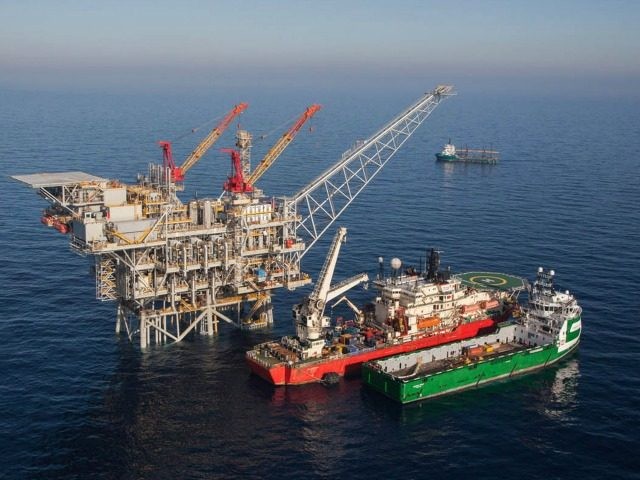The Trump Interior Department’s plan to sell offshore oil and gas drilling rights is an effort to make California pay for being the largest state beneficiary of federal spending.
Secretary of the Interior Ryan Zinke’s release of a proposa Jan. 4 to sell federal rights to drill for oil and natural gas in all United States offshore waters was met with extreme anger and threats by California’s Democrat leadership and their environmentalist allies.
Gov. Jerry Brown demanded an immediate state drilling moratorium, while California Attorney General Xavier Becerra threatened to file his 25th lawsuit on behalf of progressive Democrats against the Trump administration in the last 11 months. Both Democrat Senators and all 40 Democrats from California’s 53 U.S. House seats oppose offshore drilling.
It should not be surprising that the Trump administration is advocating offshore oil drilling as its first initiative after passing the Tax Cuts and Jobs Act on the promise that lower corporate tax rates would stimulate U.S. domestic investment and drive higher federal tax collection. According to Forbes, the oil industry paid the highest combined federal, state and local tax rate at 45 percent, versus an average U.S. corporate tax rate of 24 percent.
With five percent of America’s proven reserves, California has been actively engaged in offshore oil production since 1896. There currently are 24 drill rig platforms off California’s coast, with most around the Santa Barbara Channel. After the 1969 Santa Barbara Oil Spill, Congress issued moratoriums against offshore drilling until 2008.
That year, Exxon proposed drilling wells in Santa Barbara County’s Tranquillon Ridge field. To avoid California jurisdiction, Exxon planned to drill directionally from their existing off-shore Irene Platform in federal waters and onshore from Vandenberg Air Force base.
With California on the verge of bankruptcy in 2009, then-Gov. Arnold Schwarzenegger and several environmental groups supported limited offshore oil drilling. But the 2010 BP Deepwater Horizon disaster in the Gulf of Mexico caused Schwarzenegger to pull his support.
With untapped offshore reserves of 3.42 billion barrels, the international price of oil over $69 a barrel, and the cost of building an offshore platform averaging $650 million, the Trump administration sees California drilling as key to an energy investment and tax boom.
California’s overwhelmingly liberal political leadership complains that the state is already a donor to the U.S. government, because it only ranks 38th out of 50 states with just 15.7 percent of gross domestic product (GDP) coming from the feds, versus a national average of 18.3 percent, according to Pew Research.
But in 2013, California was ranked as the #1 recipient for total U.S. federal spending, with $343.7 billion in receipts, over $109 billion more than #2 Texas at $234 billion. For every dollar California residents paid in federal taxes, the state received $1.18 in federal spending.
Public Policy Institute of California polling has seen opposition to offshore oil drilling along the state’s 1,270-mile shoreline consistently rise from 43 percent in 2009 to 73 percent in 2017.
Photo: file

COMMENTS
Please let us know if you're having issues with commenting.